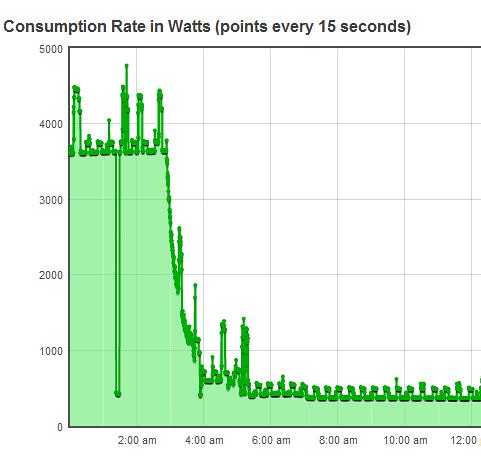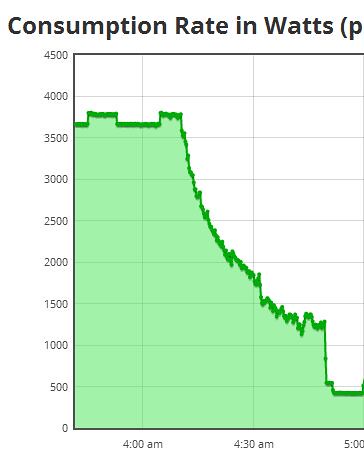yes, it's a computer controlled charging process.
It is taken into account the actual voltage of the battery (315 - 365 V), the voltage of the power outlet (100-230 V, CHAdeMO 400V), the maximum charging current (16A AC, 125 A DC) and the temperature of the on-board charger (AC-DC converter).
Is the battery entirely empty (315 V = 5.5% SOC) shall be charged at first with a clearly defined current (A), in the second part with a defined voltage (V) The charge is terminated at 365 V with houshold outlets. With CHAdeMO outlets charching is stopped when 80% of 16.280 kWh are charged.
At the end of the charging current is reduced. At 100V, the reduction is fast, at 230 V it takes about 1 hour.
https://picasaweb.google.com/lh/photo/8mJYH7rB6m3G63ra_u0_mEQmPRJ1QbYZrDrT9lQJxZI?feat=directlink
The voltage of the 88 battery cells is controlled by the MiEV Computer between max 4.147 V and min 3.579 V.
More Details you can find here on page 59 and 60:
http://www.mitsubishi-motors.com/jp/spirit/technology/technical_review/pdf/technical_review_2008.pdf
The max and min limits of battery charge are given by the battery producer YUASA based on hundred of tests in the years 1995 to 2008
http://www.gs-yuasa.com/us/technic/vol5/pdf/05_1_021.pdf
Mitsubishi implemented these limits in the MiEV-computer. The driver has neither influence nor closely knowlegde about this because there are no accurate meters for the real state (A, V, Ah) of the battery. For the driver, it is sufficient to see the approximate charge level of the battery and the estimated range. The charging process works automatically without any user intervention.
With the Mitsubishi service unit MUT-3, the exact values can be displayed.


























